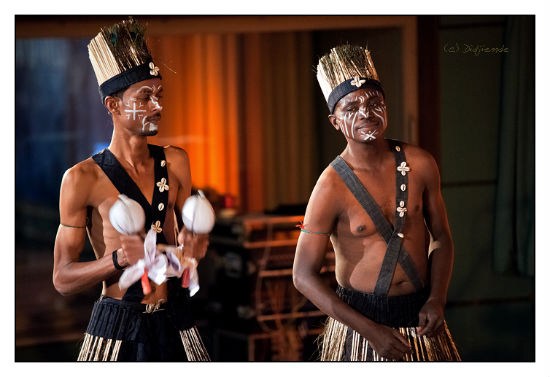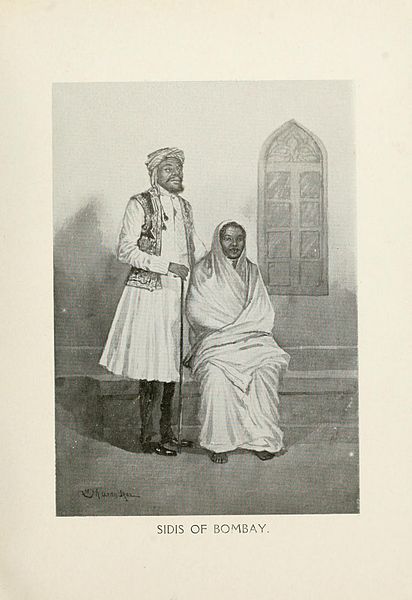by
Megan Erickson
www.jacobinmag.com
At a recent professional development
training, I was told to imagine what kind of school I would design if I
had five million dollars. I scribbled down a few ideas, shared them with
the group, and was then asked to consider how I could implement them
now, without the money.
The point was this: forget the cash. Forget that American teachers
spend an average of $500 a year supplying their classrooms with
materials. Anything is possible, if you put your mind to it.
Similarly,
Design Thinking for Educators, the eighty-one page “design toolkit”
made available to teachers as a free download by New York City-based firm
IDEO
— which has designed cafeterias for the San Francisco Unified School
District, turned libraries into “learning labs” for the Gates
Foundation, and developed a marketing plan for the for-profit online
Capella University — contains no physical tools. Problems ranging from
“I just can’t get my students to pay attention” to “Students come to
school hungry and can’t focus on work” are defined by the organization
as opportunities for design in disguise.
Tim Brown, IDEO’s CEO and a regular at Davos and
TED talks,
has described design thinking as a way to inject “local, collaborative,
participatory” planning into the development of products,
organizational processes, and now schools.
Design Thinking for Educators is full of strikingly
drawn graphic organizers and questions like, “How might we create a
twenty-first century learning experience at school?” with single
paragraph answers. “Responsibility” is used three times in the text,
always in reference to teachers’ need to brainstorm fixes for problems
together and develop “an evolved perspective.” (The word “funding” is
not used at all — nor is the word “demand.”)
We’re told faculty at one school embarked on a “design journey” and
came to an approach they call “Investigative Learning,” which addresses
students “not as receivers of information, but as shapers of knowledge,”
without further detail on how exactly this was accomplished.
Of course, the idea of engaging students as experienced co-teachers
in their own education isn’t novel, nor is it an innovation that sprang
forth from a single group of teachers using graphic organizers to
brainstorm and chart solutions.
Marxist educator
Paulo Freire
developed his critique of the “banking model” of education — in which
students’ minds are regarded as passive receptacles for teachers to toss
facts into like coins — while teaching poor Brazilian adults how to
read in the 1960s and ’70s. His book
Pedagogy of the Oppressed helped
reignite the progressive education movement during that era, and his
collaborative approach to learning remains influential in American
schools of education today.
 Peter McLaren
Peter McLaren,
who taught elementary and middle school in a public housing complex for
five years before becoming a professor of education, has since further
developed Freire’s ideas into an extensive body of revolutionary
critical pedagogy, which I was assigned in my first class as a master’s
student in education. The
Radical Math
project, launched a decade ago by a Brooklyn high school teacher whose
school was located within a thousand feet of a toxic waste facility,
draws heavily on Freire’s perspective in its curriculum for integrating
social and economic justice into mathematics.
Yet, here we are, a “
nation at risk,” with lower test scores than our international peers and children still arriving at school every day without breakfast.
Like all modern managerial philosophies that stake their name on
innovation, “design thinking” has been framed by creative-class acolytes
as a new way to solve old, persistent challenges — but its ideas are
not actually new.
According to Tim Brown, design thinkers start with human need and
move on to learning by making, “instead of thinking about what to build,
building in order to think.” Their prototypes, he says, “speed up the
process of innovation, because it is only when we put our ideas out into
the world that we really start to understand their strengths and
weakness. And the faster we do that, the faster our ideas evolve.”
What design thinking ultimately offers is not evolution, but the look
and feel of progress — great graphics, aesthetically interesting
configurations of furniture and space — paired with the familiar,
gratifying illusion of efficiency. If structural and institutional
problems can be solved through nothing more than brainstorming, then
it’s possible for macro-level inputs (textbooks, teacher salaries) to
remain the same, while outputs (test scores, customer service) improve.
From the perspective of capitalism, this is the only alchemy that
matters.
Design Thinking for Educators urges teachers to be
optimistic without saying why, and to simply believe the future will be
better. The toolkit instructs teachers to have an “abundance mentality,”
as if problem-solving is a habit of mind. “Why not start with ‘What
if?’ instead of ‘What’s wrong?’” they ask.
There are many reasons to start with “What’s wrong?” That question
is, after all, the basis of critical thought. Belief in a better future
feels wonderful if you can swing it, but it is passive, irrelevant, and
inert without analysis about how to get there. The only people who
benefit from the “build now, think later” strategy are those who are
empowered by the social relations of the present.
The same people benefit when analysis is abandoned in favor of
technical solutions — when the long history of education for liberation,
from Freire to the
SNCC Freedom Schools to
Black Panther schools to today’s Radical Math and Algebra projects (none of them perfect, all of them instructive) is ignored.
It’s not surprising, then, that when
Carlos Rodríguez-Pastor Persivale,
the billionaire son of an elite Peruvian banking family, decided to
expand his empire of restaurants and movie theaters by buying up a chain
of for-profit English-language elementary schools, his first step was
to contact IDEO and commission them to design everything: the buildings,
the budget, the curriculum, professional development opportunities for
teachers. The network is called
Innova, and it’s on its way to becoming the largest private school system in Peru.
According to “ed tech community”
edSurge,
Innova is “more than just an example of how first-world ideas about
blended learning and design thinking can be adapted in a developing
country.” It aims to close the achievement gap, build Peru’s next
generation of leaders, “and make a profit while doing so.”
Innova students use computer tutoring programs designed by Pearson and Sal Khan, a Gates Foundation protégé. (By now,
Khan’s story is canonical among readers of the
Harvard Business Review:
in 2005, the former hedge-fund analyst created a simple computer
program for practicing math problems and some instructional videos to
help tutor his cousins remotely. These went viral on YouTube among
parents looking for after-school enrichment activities for their
children, including Bill Gates.)
In a photograph of one location posted to IDEO’s website, students
sit in groups of six, each absorbed in his or her laptop. The school’s
modular walls collapse to allow classes of thirty to be joined together
into one large group of sixty students at various times throughout the
day.
After a visit, Khan remarked, “I was blown away when I visited
Innova. It was beautiful, open, and modern. It was inspiring to see an
affordable school deliver an education that would rival schools in the
richest countries.” The question is, affordable for whom?
Tuition at an Innova school is $130 a month, which is considerably
less than the cost of your average American private school, but would
require shelling out over a quarter of the monthly income of a family
living on Peru’s median household income of $430 a month. Half of the
families that attend Innova are led by two parents working professional
jobs such as accountants, engineers, or entrepreneurs. For his part,
Rodríguez-Pastor has been clear that the schools are targeted
specifically at Peru’s emerging middle class, but American education
reformers have a different sense of what the schools represent.
IDEO puts forth the fact that Innova students perform higher than the
national average on math and communication tests as proof that they’ve
delivered on their mantra for the project: “affordability, scalability,
excellence.”
But if test scores are higher than those of public schools, it is not
because of the soul-searching of teacher/designers. It’s because
tuition is about a quarter of the national median income. After all, a
consistent pattern in the
educational research
of the past half-century is that the socioeconomic status of a child’s
parents is one of the strongest predictors of his or her academic
success.
“Usually in Peru, our schools are like a jail,” says Innova founder
Yzusqui Chessman. “But [Innova] schools . . . have big transparency,
many colors, and bandwidth throughout.” Transparency and Wi-Fi for the
middle class, while everyone else attends jail-like schools?
Given the data, perhaps it would be more revolutionary, more
innovative — more forward-thinking — if, instead of free idea toolkits,
IDEO built a system that ensured that every child, rich and poor, had
access to these beautiful new schools. There is one simple, elegant
solution: make them free and public, and tax rich business owners like
Rodríguez-Pastor to pay for them.
On the other hand, American historian of education
Larry Cuban has observed that even when innovations
are
well-funded for mass use in public schools — during the Baby Boom, for
instance, over $100 million was invested by the federal government and
the Ford Foundation to promote the use of televisions in classrooms to
alleviate a teacher shortage — they rarely change the fundamental nature
of schooling.
When we think about the classrooms of the future, we have to ask what
(as Marshall McLuhan has put it) technologies like radio and television
can do that the present classroom can’t. That means asking: what’s
futuristic about the future? And equally important, whom will it belong
to?
Teaching Machines
Technology offers real possibilities
for positively changing the way we relate to each other as human beings.
For example, adaptive technology for children with special needs gives
us the potential to integrate even children with severe disabilities
into general-education classrooms.
But one laptop per child can’t lift communities out of poverty,
because technology is not an alternative to wealth redistribution from
the top 1 percent to the bottom 99.
There is a disconnect between what
we imagine technology and education can do, and what they actually do.
Management gurus and their tech-industry followers insist that if we
can dream it, we can do it; that instead of “throwing more money at the
problem,” we must use our creativity to brainstorm best practices for
education and make them scalable. Harvard Business School Professor
Clayton Christensen
believes that in the future, computer-based instruction will entirely
replace the current model, bringing a higher return on investment for
the nation’s education system.
Today’s corporate education reformers express frustration with the
continuity of traditional schooling methods — though most do not
recognize the history to which they are intimately tied, since
technological innovation is imagined to be as ahistorical as it is
apolitical. In a 2013
Google+ hangout, US Secretary of Education Arne Duncan told Sal Khan:
We have to continue to accelerate. The fact that we’re
still teaching with a nineteenth-century model makes no sense
whatsoever, with twenty-five or thirty kids sitting in rows learning the
same thing at the same time, same pace. It’s like Neanderthal. It makes
no sense. This idea with technology being a great thing to empower
moving from seat time to competency — I don’t want to know how long you
sat there, I want to know, do you know the materials? Do you know
Algebra or Biology or Chemistry or Physics? If you know it, you
shouldn’t have to sit there.
Edward Thorndike, the behavioral psychologist known for introducing
scientific methods into the field of education, shared this frustration
when he first
theorized
the possibility of a teaching machine. Textbooks, he observed in 1912,
prod a student towards reasoning, but are unable to manage the process
of elucidating just enough to help a student arrive at his or her own
conclusions.
Described by colleagues
as prodigious, efficient, and an extremely rapid reader who liked to
read books in one sitting, smoking cigarettes between chapters,
Thorndike was preoccupied throughout his career with the quantification
of human intelligence — he would go on to create an aptitude test used
by the American military during World War I, as well as college entrance
exams — but his objection to the use of textbooks in classrooms is an
argument against standardization, or at least, against learning at a
single standard pace mediated by a teacher.
 |
| Edward Thorndike |
Thorndike envisioned a future in which texts were capable of offering
a self-directed learning experience for schoolchildren: if, “by a
miracle of mechanical ingenuity,” he wrote, a book could be arranged to
hide information and display it step-by-step, so that page two was only
accessible upon mastery of page one, “much that now requires personal
instruction could be managed by print” — effectively making the
teacher-as-guide obsolete.
Four decades later, B. F. Skinner, a man who neither believed in free will nor had
hope
for the world’s salvation, stood in front of a new kind of classroom
and announced that the future was here. Skinner had been influenced by
the work of
Sidney Pressey,
a psychologist who, following Thorndike’s research on the retention of
information through practice, developed a machine he believed would
generate an industrial revolution in education (Pressey himself was
deterred by the Great Depression).
“I am B. F. Skinner, Professor of Psychology at Harvard University. I
should like to discuss some of the reasons why studying with a teaching
machine is often dramatically effective,” he announces in a
video from 1954.
On the screen, we see an enormous group of teenage children sitting
elbow-to-elbow at long tables, rapidly and silently inputting answers
into a device that looks like a cross between a typewriter and a record
player. In the window of each child’s machine is an incomplete sentence
or an equation missing a piece. Once the student fills in the blanks,
the machine confirms or corrects the answer. Every child works alone.
“The machine you have just seen in use . . . is a great improvement
over the system in which papers are corrected by a teacher where the
student must wait perhaps until another day to learn whether or not what
he has written is right. Such immediate knowledge . . . most rapidly
[leads to] the formation of correct behavior,” Skinner reflects.
 |
| B. F. Skinner |
Skinner was not only concerned with increasing the efficiency of
knowledge absorption for the individual learner, but also for the group.
He leaves us with this: “With techniques in which a whole class is
forced to move forward together, the bright student wastes time waiting
for the others to catch up, and the slow student, who may not be
inferior in any other respect, is forced to go too fast. . . . A student
who is learning by machine moves at the rate that is most effective for
him.”
For Skinner, as well as for corporate education reformers, knowledge
is static and students are passive recipients; efficient transmission of
information is the goal of education. And technology is the means by
which we make the transmission process faster, cheaper, smarter. Gifted
children are best served by moving individually at their own pace, “slow
students” move at theirs, all in isolation.
This way of conceptualizing learning corresponds neatly with our
present economic system, in which individuals either stand or fall on
their merits, but it fails to deal with — in fact it conceals — the
contentiousness of reality.
Skinner’s new classroom went through many iterations over the decades
that followed. A more sophisticated version known as Individually
Prescribed Instruction (IPI) was used by
students at Pittsburgh’s Oakleaf Elementary in 1965, and described by a
contemporary journal
of education as “the nation’s first successful operation of
individualized instruction on a systematic, step-by-step basis.” His
teaching machine, however, was never adopted on a mass scale in American
public schools.
Part of the resistance to the technology came from educators. Newly
professionalized, they were adamantly opposed to having their role
transformed into that of a coordinator. Rodney Tillman, Dean of the
George Washington University School of Education, wrote in
an essay
titled simply “Do Schools Need IPI? No!” that the functions of a
teacher using the system are limited to “writing prescriptions for
courses of study, diagnosing student difficulties, and tutoring. . . .
These I cannot accept.”
Tillman was not resistant to the use of technology in schools so much
as he was hostile to the particular vision of learning implicit in
teaching machines, which rewarded rote mastery while evaluating student
performance in isolation. The skills required to prepare children for
the future were, he argued, not didactic, but interpersonal.
And even in neurotic post-Sputnik America, parents tended to share a
belief in the broadly humanist model of education. In 1960, the National
Education Association (NEA) found it necessary to release a statement
reassuring concerned mothers that while mechanical aids were now part of
a modern classroom, they would never be the mode of instruction. “NEA
Allays Parent Fears on Robot Teacher”
was the headline in the
Oakland Tribune.
Anxiety about technology in classrooms, or about robots raising the children, was crystallized in pop culture.
The Jetsons,
which premiered in 1962, is the story of a typical nuclear family in
the year 2062. George Jetson works a few hours a week at Spacely’s Space
Sprockets, Jane Jetson is a homemaker, and young Elroy Jetson’s teacher
is a robot named Ms Brainmocker.
By 1981, at the end of his life, Skinner recanted his belief that
technology could solve the world’s problems, observing bitterly that no
one had had the inclination to use the tools he’d created. Skinner was
not alone in his desire to radically transform education for a new
century, or in his eventual disillusionment with this project. Just a
few decades prior to the development of the teaching machine, Thomas
Edison had declared that books were obsolete and motion pictures would
initiate a revolution of the school system within ten years — a process
that is still dramatically incomplete over a hundred years later.
The possibilities of education technology remain ambiguous. The tools
with which we learn are neither intrinsically empowering, as Skinner
assumed and Arne Duncan continues to assume, or inherently threatening.
They can be used in ways that are liberating or oppressive. But the
popular idea that technological innovation is cruel (Ms Brainmocker) is
not irrational.
“Innovation” is almost always invoked by elites to ignore class
conflict, to the point that some leftists have come to be wrongly but
understandably suspicious of modernization altogether. Experts from
Edison onward called enthusiastically for the incorporation of film and
radio in classrooms without accounting for the fact that, as historian
David Tyack
points out, there were still tens of thousands of American schools that
lacked electricity well into the 1960s. Of course, these schools were
not evenly distributed across the country. They were the ones attended
by working-class children, particularly in communities of color.
The Optimism of Billionaires
In 1966, an MIT professor
lamented
that it had been easier to put a man on the moon than to reform public
schools. Today, SpaceX CEO Elon Musk wants to replace the US space
shuttle program and
blow up education by turning it into a game and adding special effects.
“Give kids a chance to fly,” Duncan said to Khan in their Google
hangout. “Let them find their passion and they’ll go to the moon with
that.” Why are two such disparate concepts as education and space travel
so intricately linked in our public discourse? Education and space are
both metonyms for the future.
When today’s children grow into tomorrow’s adults,
holding meetings in holodecks
and beaming themselves through the galaxy in maroon turtlenecks, they
will have replaced us. When science fiction becomes reality, we will all
be dead, unless we figure out a way to bring about the impossible.
From the perspective of the tech industry, education and space travel
are alike because they are problems in search of rational,
personalized, twenty-first century answers, like those arrived at by
design thinking. The expectation is that these answers will obliterate
material limitations, class struggle — history, past and present.
Design thinking, embraced by key figures in business and especially
in the tech industry, insists that educators adopt a perpetually
optimistic attitude because that is what it takes to believe everything
will turn out okay if we just work together to streamline our efforts.
That is what it takes to believe that the best idea is the one that
survives group discussion and is adopted. The rabid optimism of the
techno-utopian vernacular, with its metaphors that no longer register as
metaphors, obscures the market imperatives behind the industry’s vision
for the future.
This is intentional. Conflating the future with unambiguous,
universal progress puts us all on equal footing. Participating as a
citizen in this framework consists of donating your dollar, tweeting
your support, wearing your wristband, vowing not to be complacent.
Critiquing the solution only impedes the eventual discovery of the
solution. And why make demands for power if you yourself are empowered?
Empowerment, as Duncan uses it, is a euphemism. Anger is empowering,
frustration is empowering, critique is empowering. Competence is not
empowering.
The fact is, education is not a design problem with a technical
solution. It is nothing like building a spaceship. It is a social and
political project that the neoliberal imagination insists on innovating
out of existence. The most significant challenges faced today in
education are not natural obstacles to be overcome by increasing
productivity — they are man-made struggles over how resources are
allocated.
In a frequently cited
policy report
on academic performance and spending over the past forty years, Andrew
J. Coulson of the Cato Institute concludes that dramatic increases in
education funding have not resulted in improvements in student
performance.
“In virtually every other field,” Coulson notes, “productivity has
risen over this period thanks to the adoption of countless technological
advances — advances that, in many cases, would seem ideally suited to
facilitating learning. And yet, surrounded by this torrent of progress,
education has remained anchored to the riverbed, watching the rest of
the world push past it.” What Coulson and others who repeat this myth
ignore is who specifically is left out of the tech world’s ecstatic
march towards progress, and how and why they are left out.
The United States is one of just three OECD countries, along with
Israel and Turkey, where schools that serve rich families have
better resources
and more funding than schools that serve poor families. The other
thirty-four countries included in the index either provide equal funding
for all students or spend a disproportionate amount of money on
students from low-income families.
In a country where the top 20 percent of the population earns eight
times as much as the bottom 20 percent, this inevitably leads to two
distinct and parallel systems of education, one for the rich and one for
the poor. It’s not that “money doesn’t matter” for reforming the
education system, or that technology can be a substitute, but that
children from working-class and poor families score lower on
standardized test scores than their wealthy peers — and America has many
more poor families than rich.
The Cynicism of Managers
Sal Khan’s Khan Academy, funded by
generous grants from the Gates Foundation, is the miracle of mechanical
ingenuity that Thorndike dreamed of a century ago.
When I first logged on to
Khan Academy,
I was surprised to find that despite all the tech-industry backing, it
is not attractive, simple, or intuitive. Users mouse over the Subjects
bar and choose Math, Science, Economics and Finance, Arts and
Humanities, Computing, Test Prep, or Partner Content. Clicking on a Math
“mission” brings you to a page of basic exercises. In instructional
videos, Khan is awkward, a one-time mathlete with a slight twang and the
affected exuberance of someone who has been teased but ultimately
rewarded for being himself.
The website is interactive in the most mechanistic sense of the word:
it provides individual feedback. After ten correct answers, the user
can move on to the next concept. Ten correct answers is applied
uniformly throughout the site as a metric, though it’s unclear why
success in this metric indicates mastery, just as the 85 percent correct
required by the IPI system seemed to be arbitrarily selected in order
to enable the teaching machine to function. Badges, which are meant to
be incentives, are exactly the kind of thing an “unabashedly geeky”
adult would think a kid might find interesting.
It is a cloud-based, portable version of Skinner’s teaching machine.
Its strength is that it is self-guided: exercises allow repetition and
provide students with immediate feedback as they practice.
Memory performance improves with practice, and practice leads to
automaticity, which frees up working memory and allows us to concentrate
on comprehension. That’s why it’s impossible to gain complex insight
into the abstract concepts of literature or algebra until we can read
words and equations fluently. Passive practice does not actually improve
our recall of information, and Thorndike, who saw the mind as a group
of habits, was the first to identify the use of feedback as essential to
successful learning.
But where’s the revolution? Khan is quick to say his videos are not a
replacement for teachers, a claim that seems disingenuous given that
the mission of his project is to “provide a free world-class education
for anyone, anywhere.” Pedagogically, the videos are unambitious. Even
with a paper textbook, a student can move at his or her own pace and
receive feedback by checking answers at the back of the book. Why should
a digitized version create a significantly different outcome?
Khan Academy is a fine way to practice math problems or learn a
didactic skill. What it is not is innovative in pedagogy or design. As a
system of education it is a failure. It degrades both student and
teacher by deemphasizing the importance of interpretation and critique
in education, just like design thinking does.
One example of the importance of this kind of flexible and evolving
practice — especially for children from low-income families — comes from
Lisa Delpit, educator and author of
Other People’s Children.
In talks, Delpit uses a situation she witnessed in a preschool in which
a teacher handed out a tray of candy and instructed children to each
take a piece and pass on the tray. Some of the children took multiple
pieces, and there was not enough to go around.
A teacher evaluating the children without interpreting the context,
like a machine, would conclude that the children did not successfully
complete the task and need more practice in sharing. In fact, after
asking why the children took extra pieces, the human teacher found that
they were simply engaging in a different kind of creative economy,
saving up a couple of pieces to take home to siblings later.
I suspect the innovation Gates is investing in is not a technological
one, but a managerial one. The only truly novel thing Sal Khan has done
is produce a cheap and popular way to distribute basic lectures and
exercises to a large number of people who like them.
It’s possible that what Gates admires most about him is that one man
can teach so many different subjects at different levels, from
kindergarten math to cell biology to financial markets. At the Aspen
Ideas festival, Gates praised Khan for moving “about 160 IQ points from
the hedge-fund category to the teaching-many-people-in-a-leveraged-way
category.” Look, he seems to be saying, at all the value that can be
extracted from one employee!
In a
November 2012 interview,
Gates told Fareed Zakaria, “When you revolutionize education, you’re
taking the very mechanism of how people become smarter and do new things
and you’re priming the pump for so many incredible things. Over the
next decade at all levels in all countries, that’s going to change quite
dramatically.” Technology “will take that space at the current
investment levels and allow us to do a far better job.”
Elsewhere,
Gates has called for austerity in public education, repeating the
familiar argument that for thirty years we’ve been spending money while
performance by American children remains flat. What we need to do, he
says, is raise performance without spending more by changing the way
money is spent. To that effect, Arne Duncan
asked
a room full of Silicon Valley entrepreneurs and investors last year,
“Can we find ways to scale the amazing teachers we do have?” Systems
that “scale” retain quality under an increased workload. Modifying
teachers to scale would mean replacing them with robots or computers.
Managers are incentivized to outsource redundant jobs and tasks, but
in the past thirty years there’s been a special focus on chipping away
at the security and esteem of teachers and the American school system.
Certainly it’s about money, as it always is, but the financial backing
of the Gates Foundation is astronomical enough that the question is less
about actual scarcity and more about how the funds will be spent.
The firing and disciplining of teachers is also an ideological
choice: teachers threaten the ruling class. Though they are atomized as
workers into separate classrooms and competing districts, teachers are,
as
Beverly Silver
puts it, strategically located in the social division of labor. If they
don’t go to work, no one can — or at least, no one with children to
look after. As caretakers, teachers are by definition important and
trusted community figures, public care workers who can shut down private
production.
In the United States, where the vast majority of families continue to
rate their own child’s teacher highly, even while believing the
political mantra that the nation’s education system is rapidly
deteriorating — unique job protections like tenure serve to further
strengthen teachers’ capacity to resist neoliberal reforms.
In the same vein, schools are public spaces in which children and
teenagers can put down their pencils or laptops or iPads and organize
against state violence and coercion, as we’ve seen in the aftermath of
Michael Brown’s murder. The possibilities for confronting injustice are
so powerful that children (especially black and brown children, but
increasingly, all American children) are literally policed and
considered suspects in their own school buildings.
Teachers who encourage resistance are essential sources of support
and guidance for kids. People do not learn to think critically and
construct meaning in isolation — which is the assumption behind the
trend of textbooks that respond individually to each student and allow
them to move at their own pace. People argue, discuss, play, experiment,
and converse. And, as Delpit writes:
Only those who are authentically and critically literate
can become the independently thinking citizens required for any
society’s evolution. The opportunity to achieve such levels of literacy
is even more critical for those whom the larger society stigmatizes.
. . . When people of color are taught to accept uncritically texts and
histories that reinforce their marginalized position in society, they
easily learn never to question their position.
Learning as a group is not a painless process. A good teacher knows
her students well, respects them and earns their respect in return, and
challenges them to aim for the highest reaches of what Vygotsky called
“the zone of proximal development” — their potential.
As Katherine McKittrick
has pointed out
in response to the idea of trigger warnings being placed on college
syllabi: the classroom isn’t safe. It should not be safe. Teaching, for
McKittrick, is a “day-to-day skirmish,” and teachers must work hard to
create classroom conversations “that work out how knowledge is linked to
an ongoing struggle to end violence,” to engage with the history that
students bring with them into the classroom and resist reification of
oppressive thinking in practical ways.
This winter, during the
Hour of Code
sponsored by the tech industry and supported by the US Department of
Education, Susan DuFresne, a kindergarten teacher and former teacher’s
aid with forty years of experience told me, “Children are not standard.
They need unstructured play indoors and out to develop skills” like
sharing, listening, cooperation, and self-regulation.
The Hour of Code is a publicity stunt in which public school children
from preschool up are given laptops and taught to code. DuFresne was
vocally opposed. Kids “have different learning styles,” she said. “Some
learn faster with technology. But now children as early as third grade
will be required to type written answers into text boxes, click and
drag, and use multiple tech software tools on the Common Core tests.”
Still, her resistance had little to do with fear of new tools, and
everything to do with the conceptualization of the role of technology in
the classroom.
Another high school teacher, Brooke Carey, who has been working for
over a decade in the New York City school system, agreed that technology
is often used in public-school classrooms in “a fairly traditional
way,” with iPads serving as a fancier version of pen and paper and
Smartboards functioning as computerized chalkboards or dry-erase boards.
In American public schools, teaching tools have been digitized and
optimized for efficiency, but the content and philosophy remain the
same.
Even Google engineers know this. An
article in the
New York Times
reported on the popularity of the Waldorf model of education in Silicon
Valley as if it were a contradiction: “A Silicon Valley School That
Doesn’t Compute.”
Waldorf schools incorporate creative and tactile experiences and
tools including hammers and nails, knives, knitting needles, and mud —
but not computers — into the curriculum. Engagement comes from the
connection between children and their teachers, who stress critical
thinking and aim to create interesting, inquiry-based lesson plans.
According to the
Times, employees at Google, Apple,
Yahoo, Hewlett-Packard and eBay send their children to the Waldorf
School of the Peninsula. “The idea that an app on an iPad can better
teach my kids to read or do arithmetic, that’s ridiculous,” Alan Eagle, a
Google communications executive who’s written speeches for Eric
Schmidt, told the
Times.
The great irony is that the very Silicon Valley reformers promoting
and funding techno-utopian models for American schoolchildren refuse to
submit their own children to anything like it, choosing innovative
pedagogical models instead of newer touch screens.
The Classroom of the Future
One of the most powerful moments for
me as a beginner teacher was seeing a video of a lesson I gave. The
recording enabled me to transcend biology: to get out of my own head and
see myself as my students did, to notice and interpret rustlings and
undercurrents that would have otherwise escaped me entirely due to
purely physical limitations.
In an hour, I learned more about my practice than I had during months
of supervisor evaluations. iPads are more than glorified expensive
dry-erase boards. They could be used to connect teachers, who
traditionally operate within the confines of their own individual
classrooms, to one another for professional development and growth
purposes. Why not film the lessons of experienced teachers and compile a
national or global library of what an engaging lesson looks like,
immediately accessible to new teachers?
What the current conversation about designing the classrooms of the
twenty-first century misses is that innovations do not take place
outside of the political economy; they are part of it. What we call
technology and what we create with it is determined by the social and
political landscape in which it is created. As Marcuse wrote in
One-Dimensional Man,
“There is no such thing as a purely rational scientific order. The
process of technological rationality is a political process.”
For the elite business class, the animating purpose of technology in
classrooms is to more efficiently develop human capital, to make some
people smarter and faster, and sort out the rest into the discard pile
of American capitalism: low-wage labor. Because industrial capitalism
makes us all, workers and capitalists alike, dependent on the market for
acquisition of the basic necessities of life, we live lives dominated
by market imperatives.
The American education system is shaped by those market imperatives —
at least for children in public schools. The rich know that JavaScript
can be learned in a matter of months. Education for empowerment requires
the time-consuming cultivation of a complex understanding of history
and one’s place in it, as well as how it continues to shape our
relationships and political economy.
When we imagine successful teaching as instruction of X number of
people achieving Y level of fluency, we redefine it — whether done by
human or machine — from a social (and potentially political) to a merely
technical act.
Teachers must continue to be able to help children think critically
about the ways that reality is reshaped by technology and changes in the
mode of production. How will children who take Google for granted
understand research and inquiry? What will friendship be like for
children of the electronic age, who have the option of never losing
contact with childhood friends thanks to Facebook? Who wins and who
loses by the adoption of specific technologies?
It’s impossible to say today how we should teach and learn about
social relations mediated by technology, since that is something that
must be shaped by praxis — teachers and students working together. But
just to imagine the evolution of education in this way is to ask radical
questions, beginning with the forbidden one, “What’s wrong with
education today?” That question inevitably leads to an even bigger and
more dangerous one — what’s wrong with society?
In 1922, a journalist described the way technology changes our
relationship to the world: “To the schoolboy of the year 1995 history
will not merely be something to be memorized out of books. It will be
visualized and made real for him by the moving pictures that are being
made now. The people of our time will not be mere history book ghosts to
this boy but living creatures who smile at him and walk and play and
love and hate and work and eat.”
But this isn’t the way we see history in 2015. Today, we see history
as a dying field, in a separate sphere from STEM education; its
practitioners likened to the last speakers of a lost language bent on
preserving it, and devalued in the same way as women’s work: not
well-paid. Humanism is regarded as inherently opposed to machines. And
yet, as the journalist of 1922 suggested, technology offers us the
ability to form connections and experience intimacy with more people,
other people, dead and alive, across time and space.
In a contemporary novel about Victorian England,
Sarah Waters
has her protagonist notice that the most interesting thing about radio
as an invention is not the initial shock of hearing voices across space.
“It was even more uncanny to take the ear-phones off and realize that
the whisper was still going on — to think that it would go on, as
passionate as ever, whether one listened in to it or not.”
Over time, technology has transformed the way we relate to each other
and the epistemological foundations of society — the way we perceive
reality collectively. This is a truly radical opening for socialists,
inside the classroom and outside of it. What will we do with it?
----------------------
The new edition of Jacobin, focusing on technology and politics, is out now. Four-issue subscriptions start at only $19.


























